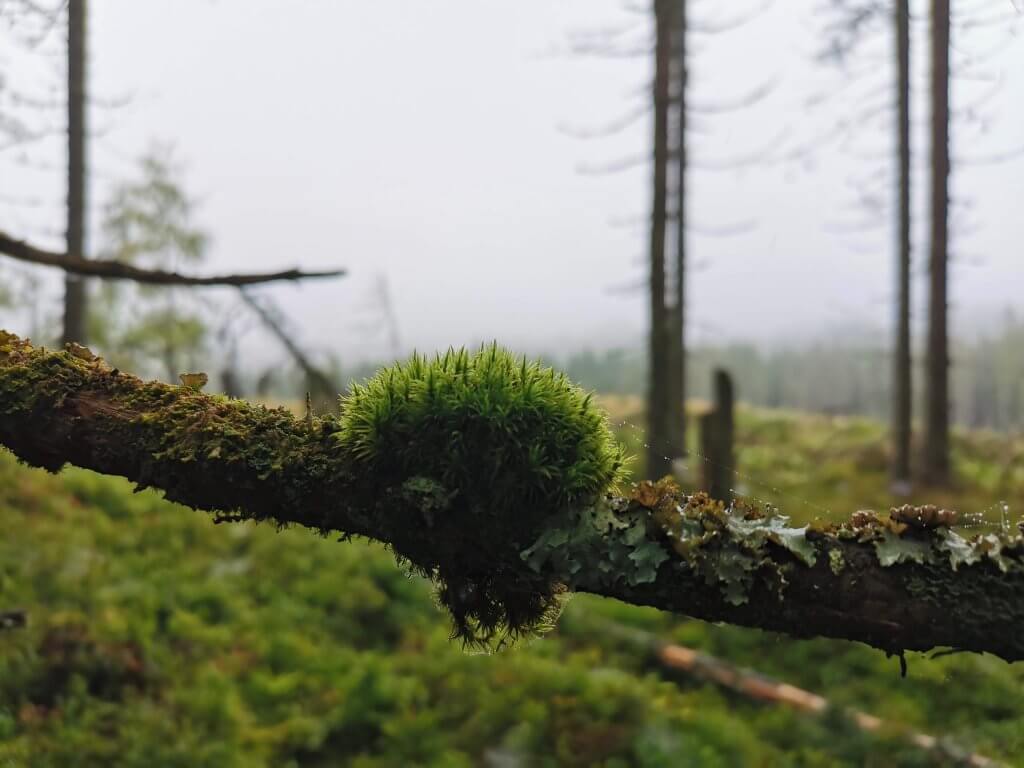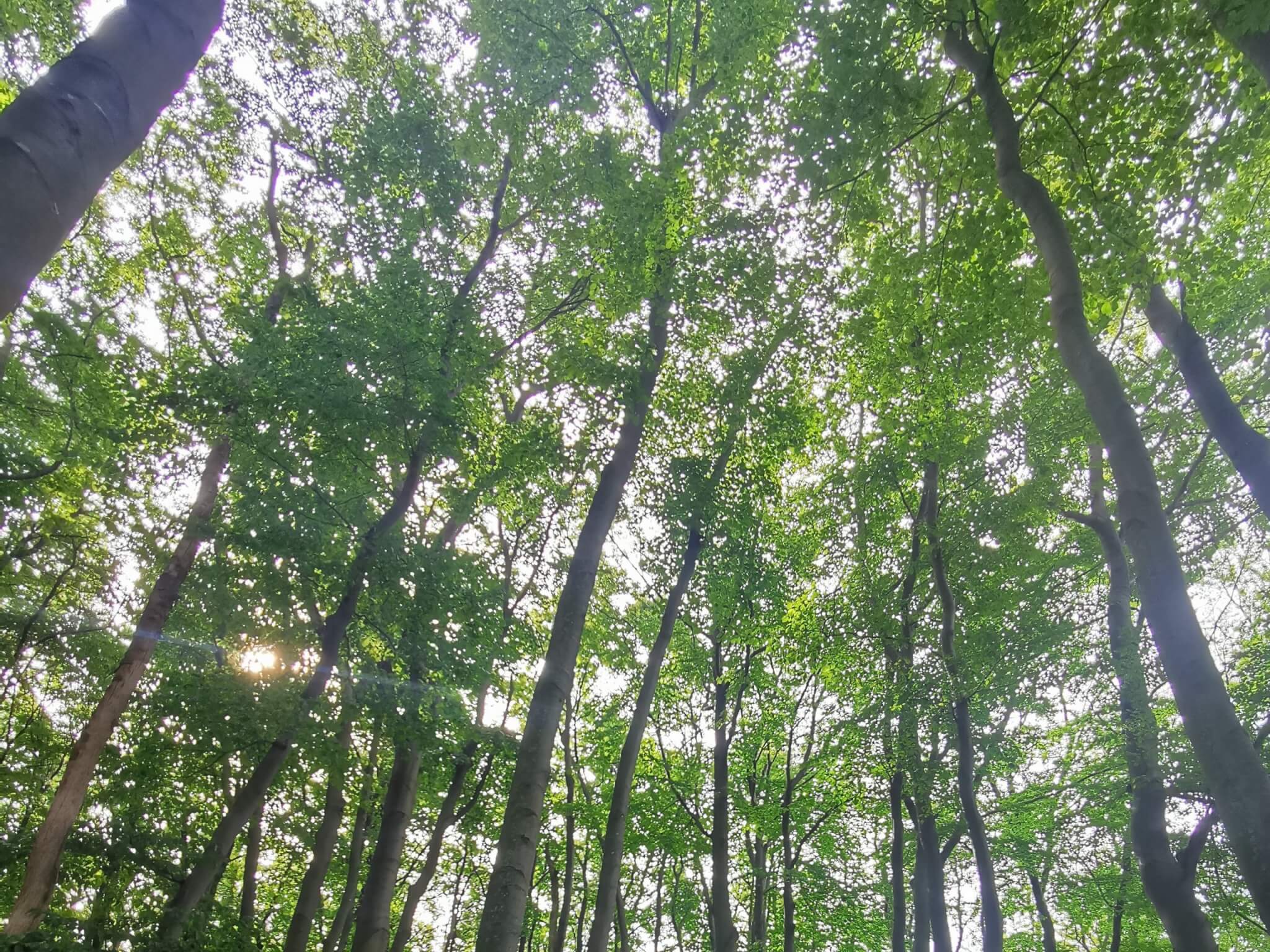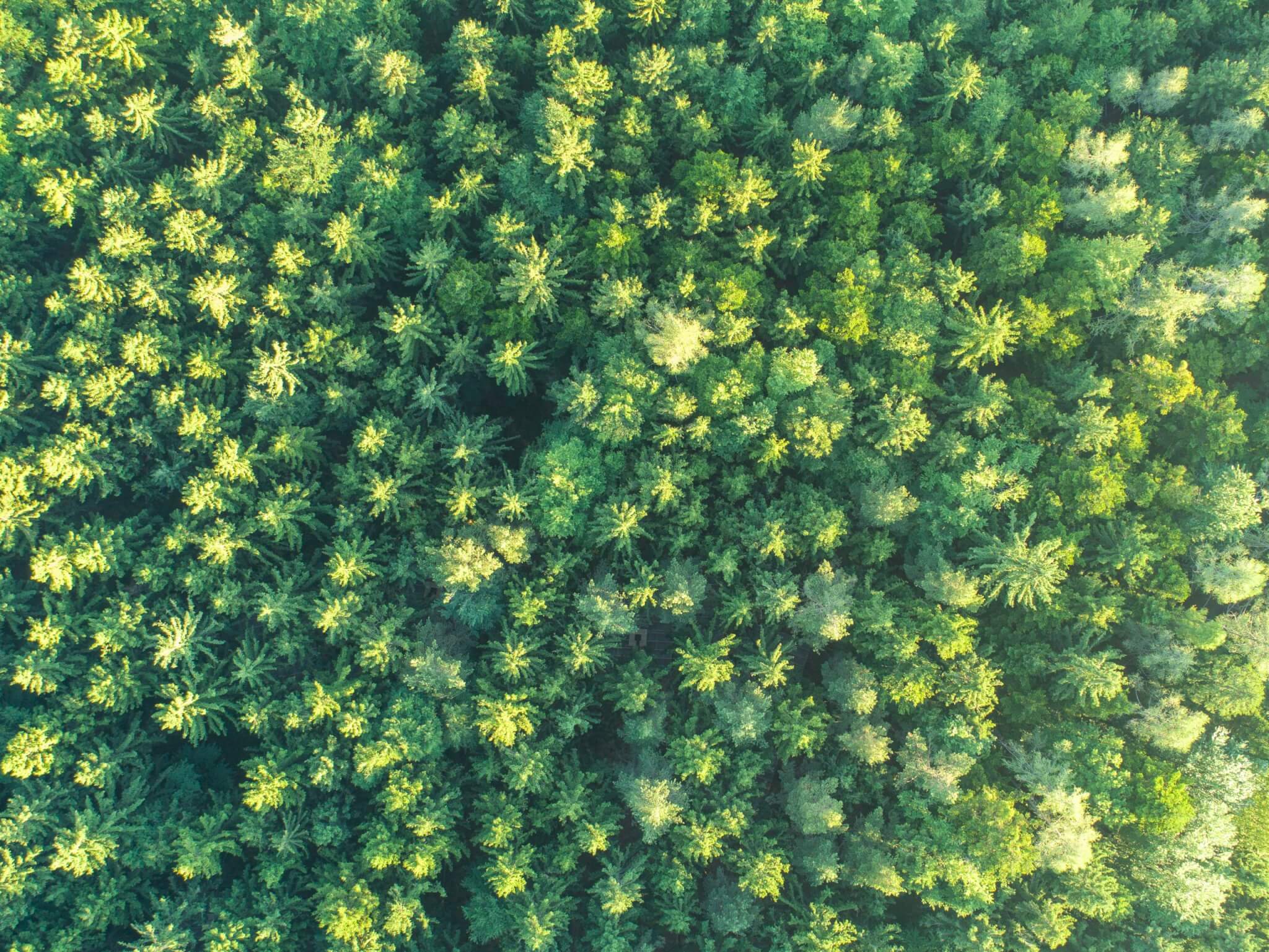Departmental Description – what we do
- Allometry
- Wood anatomy
- Dendrochronology
- Phenology
- Growth of woody plants and biomass production
- Carbon sequestration
- Impacts of climate change on woody plants
- Forest management models and their effects on animal biodiversity
- Study of invertebrate predators
- Invertebrate taxonomy
- Impact of landscape structure on biodiversity
- Application of molecular-genetic methods in food chains
- Feeding and population ecology of small mammals
- Impact of small mammals on forest tree plantations
- Return of large carnivores to the cultural landscape of Europe
- Dynamics of food webs
- Foreign substances and elements in the environment
- Definition and significance of indicators of forest ecosystem functioning
- Stabilization of hazardous elements in contaminated soils
- Toxicological risks of agrochemicals to beneficial invertebrates
Background – where we work
- Building T on the University campus – houses the main facilities for scientific work. The Department’s offices are located on the building’s 1st and 2nd floors.
- The Primary Production Laboratory in Building T is dedicated to the processing of plant biomass samples.
- The Secondary Production Laboratory and the associated Autopsy Room in Building T are used to process animal samples and are subject to the university’s authorisation to use wild experimental animals.
- The Rájec Ecosystem Station is part of the Czech Republic’s National Scientific Research Infrastructure for Carbon Monitoring (CzeCOS) and the DendroNetwork monitoring group. The station provides facilities for investigating the influence of climate on spruce ecosystem functioning, along with phenological and dendrochronological observations and long-term monitoring of energy and substance flows.
- The Lednice Ecosystem Station provides facilities for monitoring the Central European floodplain forest biome.




Cooperation – we are not alone
- Our Department places great emphasis on cooperation with research departments, universities, conservation organisations and commercial businesses. Such cooperation is essential for successful research, project implementation and transfer of current knowledge into teaching and commercial practice. We are also actively involved in several important international networks as science cannot be undertaken in isolation. Through these partnerships, we share knowledge, resources and innovation, allowing us to push the boundaries of our capabilities and contribute to the advancement of scientific knowledge.
- Atlantic Technological University
- Babeș-Bolyai University
- European University Foundation
- Friedrich-Loeffler-Institut
- German-Mongolian Institute for Resource and Technology
- HUN-REN Centre for Ecological Research
- Icelandic Forest Service
- Ilia State University
- Kasetsart University
- Khon Kaen University
- Microhumus, Francie
- Mongolian University of Life Sciences
- National University of Mongolia
- Nature Research Centre, Vilnius
- Norwegian Institute of Bioeconomy Research
- Technická univerzita vo Zvolene
- Transilvania University of Brașov
- University of Copenhagen
- University of Iceland
- University of Natural Resources and Life Sciences, Vienna [
- University of Oviedo
- University of Oxford
- Université de Rennes
- University of Reims Champagne-Ardenne
- Univerzita Komenského v Bratislave
- Utah State University
- Vienna University of Technology (TU Wien)
- Biologické centrum AV ČR, v. v. i.
- Botanický ústav AV ČR, v. v. i.
- Czechglobe – Ústav výzkumu globálni změny, AV ČR v. v. i.
- Ústav biologie obratlovců Akademie věd ČR, v. v. i.
- Centrum dopravního výzkumu, v. v. i.
- Česká lesnická akademie Trutnov
- Česká zemědělská univerzita v Praze
- Jihočeská univerzita v Českých Budějovicích
- Masarykova univerzita
- Univerzita Jana Evangelisty Purkyně v Ústí nad Labem
- Univerzita Karlova
- Univerzita Palackého v Olomouci
- Vysoká škola báňská – Technická univerzita Ostrava
- Vysoká škola chemicko-technologická v Praze
- Vysoké učení technické v Brně
- Výzkumný a šlechtitelský ústav ovocnářský Holovousy, s. r. o.
- Výzkumný ústav lesního hospodářství a myslivosti, v. v. i.
- Výzkumný ústav Silva Taroucy pro krajinu a okrasné zahradnictví
- Agentura ochrany přírody a krajiny ČR
- Biskupské lesy
- Český svaz ochránců přirody
- Deutsche Gesellschaft für Internationale Zusammenarbeit
- Diecézní lesy Hradec Králové s. r. o.
- Environmental Measuring Systems s. r. o.
- HBH Projekt spol. s. r. o.
- Hnutí DUHA
- Hnutí DUHA Šelmy
- Klub českých turistů
- Krajský úřad Jihomoravského kraje
- Lesní svět
- Lesy České republiky, s. p.
- Lesy Colloredo Mansfeld s. r. o.
- Lesy města Brna
- MERCATA LES, s. r. o.
- Ministerstvo životního prostředí
- Mongolian walking association
- Národné lesnícke centrum
- Sdružení vlastníků obecních, soukromých a církevních lesů v ČR
- Správa CHKO Pálava
- Správa Národního parku Podyjí
- Štátna ochrana prírody
- Tatrzański Park Narodowy
- Ústav pro hospodářskou úpravu lesů
- Ústřední kontrolní a zkušební ústav zemědělský
- Vojenské lesy a statky ČR, s. p.
Departmental staff – who we are
We are a collective of passionate scientists, young researchers and experienced teachers. The strength of our research team lies in its diversity. The Department acts as a base for academics with a wide range of international experience.
Head of department – Department of Forest Ecology
Department of Forest Ecology
Staff
-
Ing. Soham Basu, Ph.D.
Výzkumník projektu II
Office: T3.06
Phone: +420 545 134 158, +420 545 134 179
E-mail: soham.basu@mendelu.cz
-
Mgr. Ing. et Ing. Pavel Bednář, Ph.D.
Assistant Professor
Office: B4.45
Phone: +420 545 134 129
E-mail: pavel.bednar@mendelu.cz
-
Ing. Michal Bellan, Ph.D.
Výzkumník projektu II
Office: T3.02
Phone: +420 545 134 188
E-mail: michal.bellan@mendelu.cz
-
Mgr. Michal Bojda
Výzkumník projektu I
E-mail: michal.bojda@mendelu.cz
-
Ing. et Ing. Ladislav Čepelka, Ph.D.
Assistant Professor
Office: T3.17
Phone: +420 545 134 501
E-mail: ladislav.cepelka@mendelu.cz
-
Mgr. Eva Dařenová, Ph.D.
Výzkumník projektu II
E-mail: eva.darenova@mendelu.cz
-
Ing. Martina Dokulilová, Ph.D.
Výzkumník projektu II
Office: T3.17
Phone: +420 545 134 501
E-mail: martina.dokulilova@mendelu.cz
-
Mgr. Martin Duľa, Ph.D.
Assistant Professor
Office: T3.17
Phone: +420 545 134 501
E-mail: martin.dula@mendelu.cz
-
RNDr. Anna Faltýnková, Ph.D.
Výzkumník projektu III
E-mail: anna.faltynkova@mendelu.cz
-
Bc. Mgr. Šárka Frýbová
Výzkumník projektu I
E-mail: sarka.frybova@mendelu.cz
-
Mgr. Markéta Grúňová, Ph.D.
Dohoda o provedení práce
E-mail: marketa.grunova@mendelu.cz
-
Ing. Tomáš Hamřík, Ph.D.
Assistant Professor
Office: B3.49
Phone: +420 545 134 183
E-mail: tomas.hamrik@mendelu.cz
-
Ing. Vladimír Hula, Ph.D.
Assistant Professor
Office: T3.05
Phone: +420 545 134 012
E-mail: vladimir.hula@mendelu.cz
-
doc. Ing. Dalibor Janouš, CSc.
Academic staff – Associate Professor
Office: T3.07
Phone: +420 545 134 191
E-mail: dalibor.janous@mendelu.cz
-
Mgr. Eva Jánová, Ph.D.
Výzkumník projektu III
E-mail: eva.janova@mendelu.cz
-
Bc. Mgr. Lenka Kissová, Ph.D.
Výzkumník projektu III.
E-mail: lenka.kissova@mendelu.cz
-
RNDr. Libuše Kodarová
Dohoda o provedení práce
E-mail: libuse.kodarova@mendelu.cz
-
Ing. Jan Krejza, Ph.D.
Assistant Professor
Office: T3.13
Phone: +420 545 134 192
E-mail: jan.krejza@mendelu.cz
-
Mgr. et Mgr. Martina Krošová
Project manager
E-mail: martina.krosova@mendelu.cz
-
prof. Ing. Emanuel Kula, CSc.
Výzkumník projektu IV
Office: B2.16
Phone: +420 545 134 127
E-mail: emanuel.kula@mendelu.cz
-
prof. Ing. Jiří Kulhavý, CSc.
Dohoda o provedení práce
Office: T3.11
Phone: +420 545 134 189
E-mail: jiri.kulhavy@mendelu.cz
-
Mgr. Miroslav Kutal, Ph.D.
Assistant Professor
Office: T3.17
Phone: +420 545 134 501
E-mail: miroslav.kutal@mendelu.cz
-
Jiří Labuda
Výzkumník projektu I
E-mail: jiri.labuda@mendelu.cz
-
Tomáš Mazuch
Výzkumník projektu II
E-mail: tomas.mazuch@mendelu.cz
-
Mgr. Radek Michalko, Ph.D.
Assistant Professor
Office: T3.12
Phone: +420 545 134 038
E-mail: radek.michalko@mendelu.cz
-
František Moupic
Dohoda o provedení práce
E-mail: frantisek.moupic@mendelu.cz
-
Mgr. Ondřej Nezval, Ph.D.
Výzkumník projektu II
Office: T3.13
Phone: +420 545 134 192
E-mail: ondrej.nezval@mendelu.cz
-
Ing. Bc. Jana Niedobová, Ph.D.
Assistant Professor
E-mail: jana.niedobova@mendelu.cz
-
Mgr. Marian Pavelka, Ph.D.
Assistant Professor
Office: T3.12
Phone: +420 545 134 188
E-mail: marian.pavelka@mendelu.cz
-
Ing. Václav Pecina, Ph.D.
Assistant Professor
Office: B2.51
Phone: +420 545 134 522
E-mail: vaclav.pecina@mendelu.cz
-
Ing. Lucia Petrovičová
Výzkumník projektu II
Office: T1.13
Phone: +420 545 134 188
E-mail: lucia.petrovicova@mendelu.cz
-
MVDr. Vladimír Piaček, Ph.D.
Výzkumník projektu III
E-mail: vladimir.piacek@mendelu.cz
-
doc. Ing. Luboš Purchart, Ph.D.
Academic staff – Associate Professor
Office: T3.05
Phone: +420 545 134 012, +420 606 400 901
E-mail: lubos.purchart@mendelu.cz
-
Kateřina Purchartová
Organization worker
Office: T3.03
Phone: +420 545 134 180, +420 770 146 002
E-mail: katerina.purchartova@mendelu.cz
-
Mgr. Pavel Rotter, Ph.D.
Assistant Professor
Office: B6.78
Phone: +420 545 134 179
E-mail: pavel.rotter@mendelu.cz
-
Ing. Jan Světlík, Ph.D.
Assistant Professor
Office: T3.04
Phone: +420 545 134 188
E-mail: jan.svetlik@mendelu.cz
-
Ing. Jan Svitálek
Dohoda o provedení práce
E-mail: jan.svitalek@mendelu.cz
-
Miroslav Svoboda
Dohoda o provedení práce
E-mail: miroslav.svoboda@mendelu.cz
-
Ing. Miloš Trýzna, Ph.D.
Výzkumník projektu II
E-mail: milos.tryzna@mendelu.cz
-
Lukáš Vlachovič
Výzkumník projektu II
E-mail: lukas.vlachovic@mendelu.cz
-
Mgr. Ing. Tamara Wijacki, Ph.D.
Assistant Professor
Office: T3.07
Phone: +420 545 134 191
E-mail: tamara.wijacki@mendelu.cz
-
Bc. Helena Zamkovská
Výzkumník projektu II
E-mail: helena.zamkovska@mendelu.cz
Contact persons for thematic areas:
History
- The history of the department also dates back to the turn of 1968–1969, when the Department for the International Biological Programme was established to meet the need for studying the structure and productivity of natural systems under UNESCO’s International Biological Programme (IBP). At that time, the department was part of the rectorate of the then University of Agriculture in Brno (VŠZ) and was located in Soběšice.
- In 1971, it was renamed the Department for the International Biological Programme and organisationally assigned to the Department of Forest Botany and Phytocoenology at the Faculty of Forestry.
- From 1976, it was renamed the Department of Forest Ecology.
- In the 1970s, the department actively participated in UNESCO’s “Man and the Biosphere” (MAB) programme, which aimed to assess human impact on ecosystems and their potential future development. Research continued on floodplain forest development after water regime modifications and expanded to studying the structure and productivity of spruce monocultures and processes in these ecosystems (Rájec field station, Drahany highlands). Results included assessing the suitability of clear-cut forest regeneration in spruce monocultures and evaluating the role of forests in water quality and soil function.
- In the 1980s, the department joined the “Impact of Pollution on Forests and Forestry in the Beskydy Mountains” project. A model for predicting pollutant entry into forest stands was developed, and issues of soil acidification, heavy metal contamination, and the effectiveness of rehabilitation measures on pollutant-damaged areas were addressed. Results contributed to three major international conferences under UNESCO-MAB and in cooperation with IUFRO.
- In the 1990s, there was a major shift in research funding in the Czech Republic. The system transitioned from primarily institutional support to project-based funding through grant agencies and research programmes of the Ministry of Education, Youth and Sports, as well as sectoral ministries. Newly formulated EU research programmes played a significant role. UNESCO research programmes were scaled down. In this new context, the department underwent a significant transformation and obtained the status of an educational and research institution. The scientific and research activities were limited to addressing specific current issues in forestry research and to developing scenarios for forest development under changing environmental conditions (forest protection, biodiversity conservation, forest adaptation mechanisms to climate change). Research on floodplain forest ecosystems and secondary spruce stands in upland and mountainous areas continued. In 1991, the research unit was relocated to the current Faculty of Forestry and Wood Technology at Mendel University in Brno.
- At the start of the millennium, research into the role of forest ecosystems under climate change was enhanced. The Rájec ecosystem station’s infrastructure was significantly upgraded and included in the international CzeCOS/ICOS monitoring network (coordinated by CzechGlobe).
- Currently, climate change issues are closely linked to specific landscape ecosystem management practices and monitoring of mixed forests. The Rájec station is part of the national DendroNetwork monitoring system.